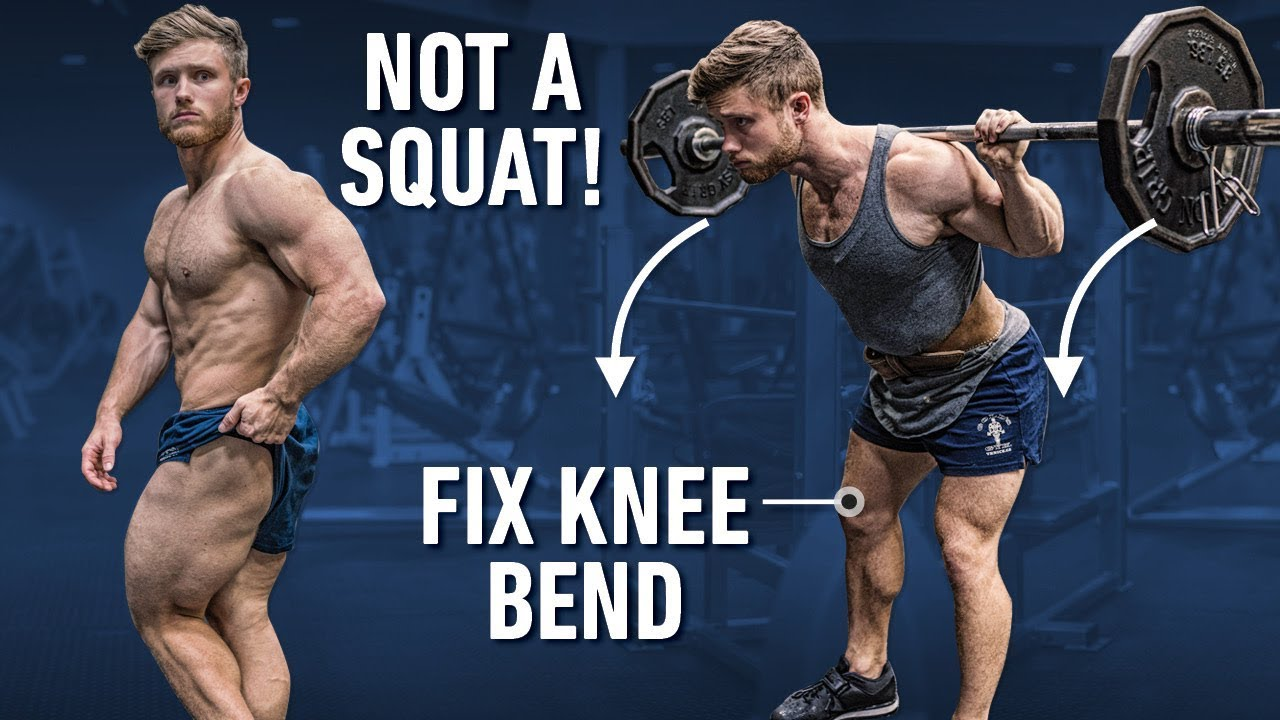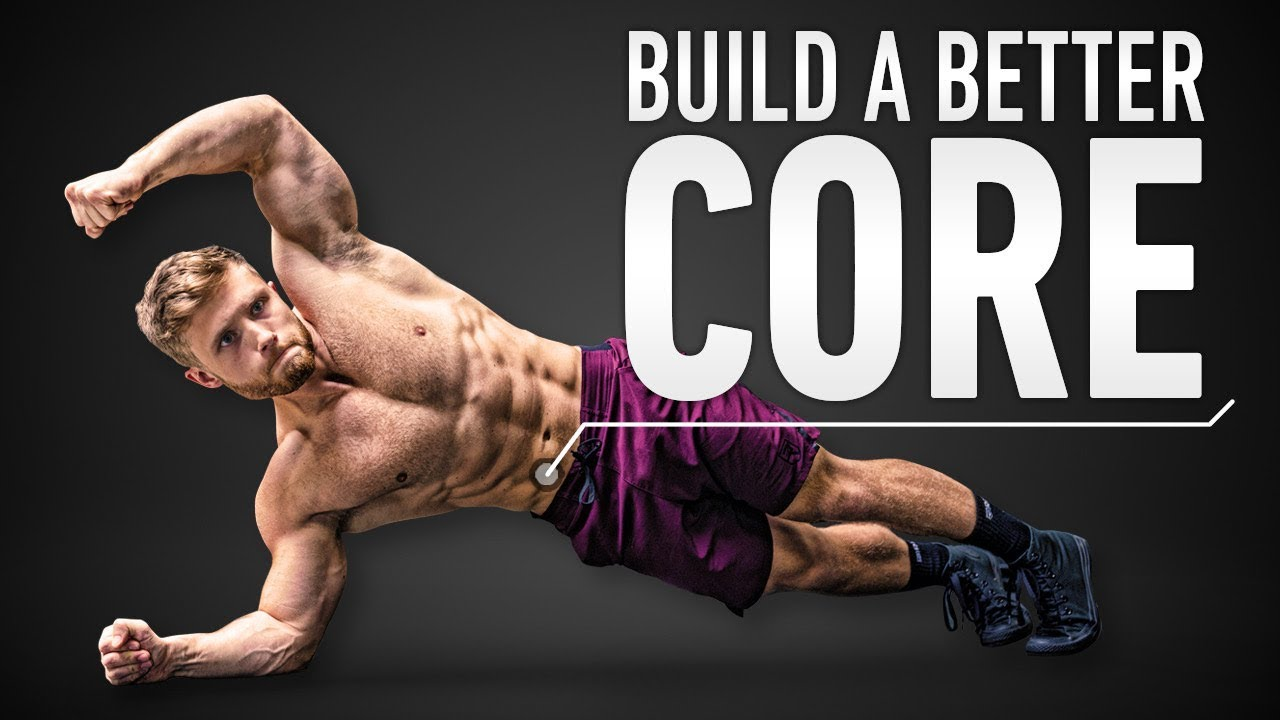The Good Morning is one of the most underrated yet highly effective posterior chain exercises. Often overlooked in favor of Romanian deadlifts or hip thrusts, this hip-hinge movement can dramatically improve hamstring and glute development while strengthening the lower back and improving squat performance.
In this article, we’ll break down how the Good Morning works, why it’s effective, proper execution, common mistakes, and how to program it for maximum results.
Why the Good Morning Deserves a Spot in Your Training Plan
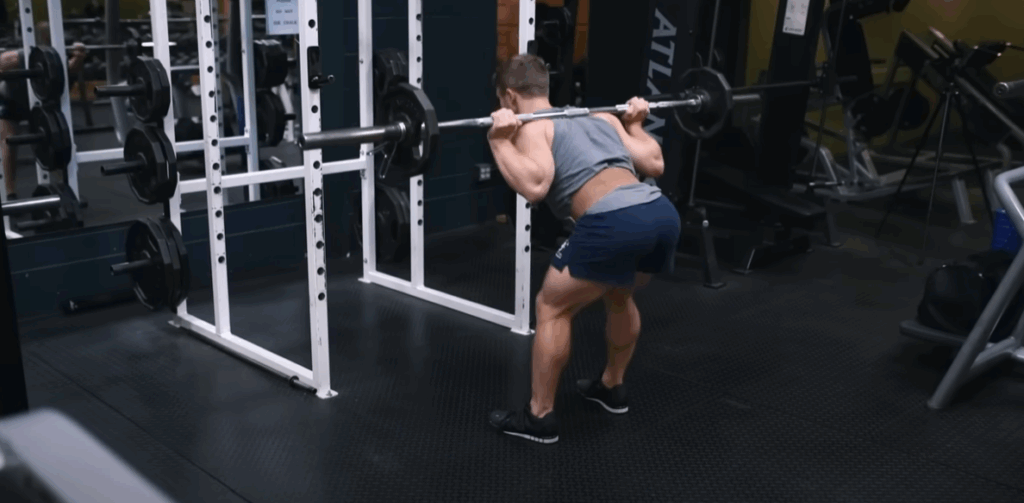
Unlike squats or leg presses, the Good Morning places a significant emphasis on the hip hinge movement pattern, making it ideal for building the muscles that drive hip extension. Here’s what makes it so effective:
1. Posterior Chain Dominance
- Glutes and hamstrings are the primary movers, lengthening under load and then contracting powerfully during hip extension.
- The spinal erectors (muscles along the lower back) work isometrically to keep your spine neutral throughout the movement.
- Because the bar is positioned across the upper back, the thoracic spinal erectors also engage to maintain upper-back tightness.
2. Better Squat Carryover
While Romanian deadlifts also target the hamstrings and glutes, Good Mornings are performed with the bar on your back, mimicking squat positioning. This improves posterior chain strength in a way that carries over more directly to heavy squats.
3. Low-Load Strength Development
You don’t need huge amounts of weight to see results. Even at 40–50% of your squat max, the Good Morning places significant tension on the posterior chain due to the long lever arm at the hips.
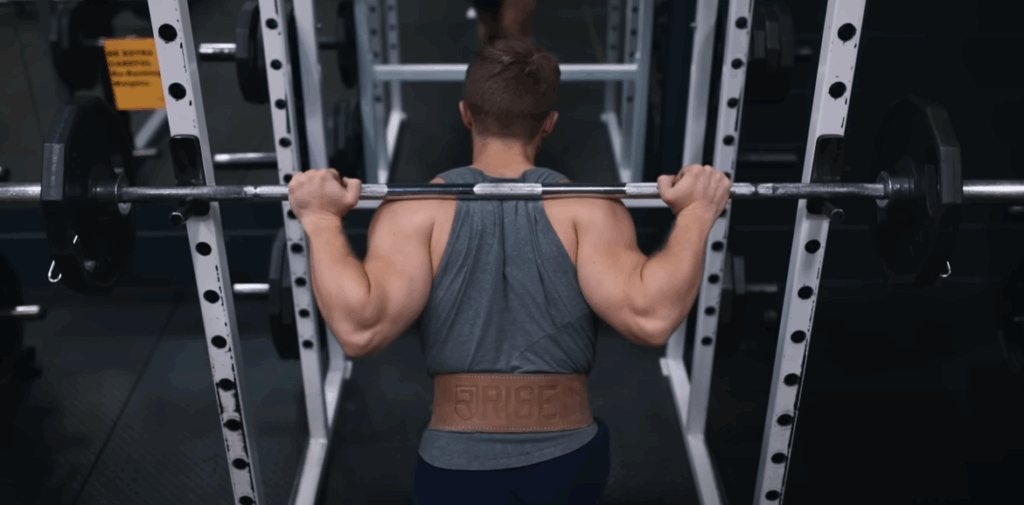
How to Perform the Good Morning Correctly
1. Setup
- Rack the Bar: Set the barbell at armpit height in a squat rack.
- Grip: Hold the bar slightly wider than shoulder-width. Too narrow may strain the shoulders; too wide can reduce back tightness.
- Bar Placement: Position the bar on your rear delts (low-bar squat position), creating a “shelf” with your upper back muscles. Avoid resting the bar on your hands or wrists.
- Unrack and Step Back: Stand tall, unrack the bar, and take 2–3 controlled steps back.
2. Stance and Bracing
- Stand with feet shoulder-width apart or slightly wider, with a 10–15° outward toe flare.
- Distribute weight evenly across your entire foot—not just on the heels or toes.
- Take a deep breath into your stomach, brace your core, and keep your chest lifted.
3. The Descent (Eccentric Phase)
- Push the hips back: Initiate the movement by driving your hips backward, keeping your shins nearly vertical.
- Maintain slight knee bend: Your knees should bend just enough to stay soft, but avoid turning this into a squat pattern.
- Control the range of motion: Lower your torso until you feel a strong stretch in your hamstrings or until you can no longer maintain a neutral spine. Depending on mobility, this may be anywhere from 45° to parallel to the ground.
4. The Ascent (Concentric Phase)
- Reverse the movement by driving your hips forward while keeping your upper back tight.
- Keep your chest lifted and spine neutral throughout the lift.
Choosing the Right Load and Reps
When first learning the Good Morning, start light—much lighter than you would for a squat or deadlift. Even advanced lifters typically use no more than 40–50% of their squat max.
For hypertrophy and strength development:
- Perform 3–4 sets of 6–12 reps with controlled tempo.
- Prioritize form over heavy loading, especially if you’re new to hip-hinge movements.
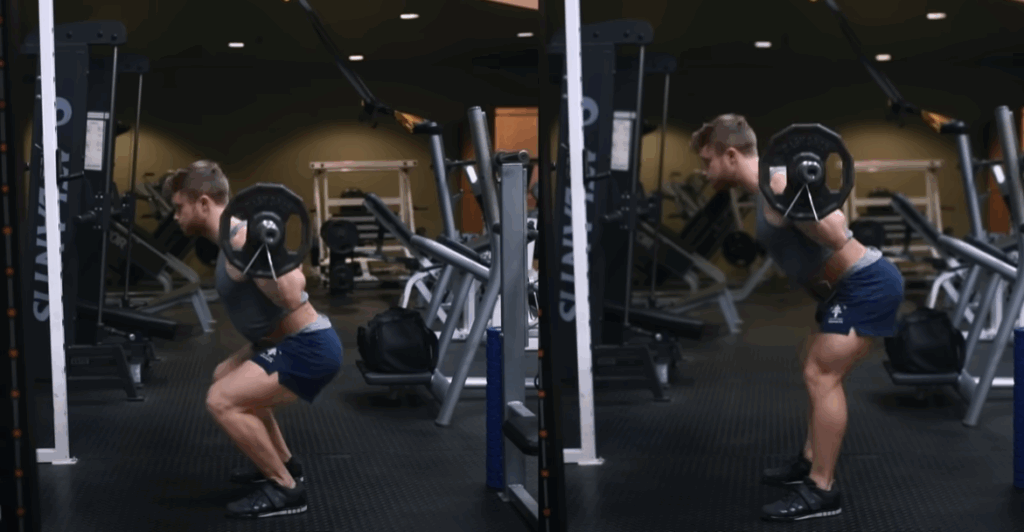
Common Mistakes and How to Fix Them
1. Turning It Into a “Squat Morning”
Bending your knees too much shifts tension away from the hamstrings and glutes, turning the movement into a poorly executed squat.
✅ Fix: Keep shins vertical and focus on hinging at the hips, not squatting down.
2. Rounding the Lower Back
Losing spinal neutrality places stress on the lumbar spine.
✅ Fix: Brace your core, maintain a natural arch in the lower back, and stop the descent before rounding occurs.
3. Bar Sliding on the Back
If the bar moves up or down during the lift, you’re likely losing upper-back tightness.
✅ Fix: Squeeze your shoulder blades together and “push” the bar into your back shelf.
4. Going Too Heavy Too Soon
Overloading before mastering technique can increase injury risk and reduce hamstring activation.
✅ Fix: Start with light weights and gradually progress once your form is solid.
Good Mornings vs. Romanian Deadlifts: Which Should You Do?
Both exercises target the posterior chain, but they have different strengths:
- Good Mornings provide better squat carryover due to bar placement and spinal erector involvement.
- Romanian Deadlifts allow heavier loading and may be easier to learn for beginners.
For balanced development, many lifters include both in their programs, rotating them across training cycles.
Progressions and Variations
Once you’ve mastered the basic Good Morning, you can increase difficulty through these progressions:
- Safety Bar Good Morning – Easier on the shoulders, but places slightly more stress on the upper back.
- Seated Good Morning – Emphasizes spinal erectors and hip mobility.
- Banded or Chains Good Morning – Adds accommodating resistance for advanced lifters.
- Tempo Good Morning – Slow eccentrics (3–5 seconds) increase time under tension for hypertrophy.
Programming the Good Morning
Good Mornings work best as an accessory movement for lower-body or posterior chain-focused training days.
Example Lower-Body Strength Day:
- Squat or Deadlift Variation – 3–5 sets
- Good Morning – 3–4 sets of 6–12 reps
- Bulgarian Split Squat or Lunge – 3 sets
- Leg Curl or Glute Ham Raise – 3 sets
- Core Work – 2–3 sets
Because the exercise places significant stress on the spinal erectors, avoid pairing it with very heavy deadlifts or back squats in the same session until you’ve built adequate work capacity.
Final Thoughts
The Good Morning is a highly effective yet underutilized posterior chain builder. By strengthening the glutes, hamstrings, and lower back, it not only helps build a stronger, more athletic physique but also provides excellent carryover to heavy squats and deadlifts.
The key is to start light, perfect your form, and progressively overload over time. When performed correctly, the Good Morning can become one of the most valuable accessory lifts in your program.


